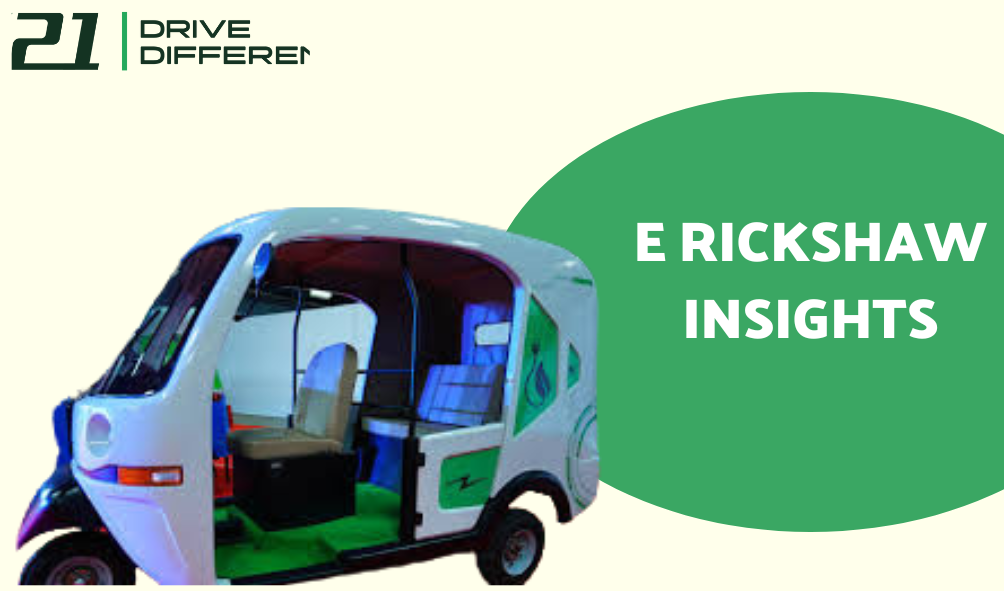The e-rickshaw market is expanding rapidly, driven by the demand for eco-friendly and affordable transport solutions. For those interested in e rickshaw insights, understanding current trends, performance factors, and market growth projections is essential. This guide explores how e-rickshaws are shaping the future of urban mobility, their performance metrics, and the market dynamics fueling their growth.
Trends in the E Rickshaw Market
Several trends are defining the evolution of e-rickshaws in the transport industry:
- Growing Demand for Sustainable Mobility
As cities aim to reduce pollution and congestion, e-rickshaws are gaining popularity as a sustainable transport option. The shift toward green mobility is one of the leading e rickshaw insights driving market growth, particularly in densely populated urban areas where emissions are a concern. - Government Support and Subsidies
Many governments are providing subsidies, tax benefits, and incentives to promote e-rickshaw adoption. These policies aim to reduce urban pollution and support green technology, making e-rickshaws a viable choice for transport operators and small business owners. - Advancements in Battery Technology
Improved battery technology, especially with lithium-ion batteries, has led to better mileage and lower charging times. This advancement makes e-rickshaws more efficient and increases their appeal, allowing drivers to complete more trips per day and reduce downtime. - Expansion of Charging Infrastructure
With the growth of EV infrastructure, charging facilities for e-rickshaws are becoming more accessible. Charging stations are now available in more areas, allowing drivers to charge conveniently and keep their e-rickshaws running longer.
Performance Factors for E Rickshaws
For any transport operator or driver, understanding the factors that impact e-rickshaw performance is crucial. Key e rickshaw insights into performance include:
- Battery Life and Efficiency
Battery life and charging speed significantly impact an e-rickshaw’s range and efficiency. Lithium-ion batteries generally offer better efficiency and last longer than lead-acid batteries, allowing for greater mileage per charge and reducing long-term operational costs. - Load Capacity
The performance of an e-rickshaw can vary depending on its load. Overloading can strain the battery and motor, resulting in decreased efficiency. Adhering to the recommended load capacity helps maintain optimal performance and extends the vehicle’s lifespan. - Driving Conditions
E-rickshaw performance is affected by road conditions and terrain. Smooth, flat surfaces enable better mileage, while uphill routes or rough roads can reduce efficiency by requiring more power from the motor. - Maintenance and Upkeep
Regular maintenance is essential for keeping an e-rickshaw in top condition. Battery checks, motor servicing, and tire pressure monitoring can all contribute to sustained performance and reduce the risk of breakdowns.
Market Growth and Potential for E Rickshaws
The e-rickshaw market has shown impressive growth over the past few years, and future projections indicate a continued upward trend. Some notable e rickshaw insights related to market growth include:
- Increasing Urbanization
As cities grow, the need for affordable and eco-friendly transport options is expanding. E-rickshaws offer a practical solution for last-mile connectivity and short-distance travel, making them increasingly popular in urban settings. - Rising Awareness of Environmental Benefits
E-rickshaws emit no tailpipe emissions, making them an attractive option for eco-conscious consumers. With growing environmental awareness, more people are choosing e-rickshaws for short commutes, further driving market demand. - Expansion into New Markets
While e-rickshaws are already popular in countries like India, other nations in Southeast Asia and Africa are beginning to adopt this technology. This expansion presents significant growth potential, as e-rickshaws provide a low-cost and sustainable solution for many developing cities. - Job Creation
The e-rickshaw industry is also contributing to job creation, providing work opportunities for drivers, manufacturers, and service providers. This job creation potential supports economic growth while promoting environmentally friendly transport.
Future Outlook for E Rickshaw Market
The future of e-rickshaws looks promising, with continued investment in battery technology, charging infrastructure, and vehicle designs tailored to urban needs. As battery technology evolves, e-rickshaws will become more efficient and economical, further boosting their appeal and potential to replace conventional fuel-powered rickshaws.
The demand for e-rickshaws reflects a broader trend toward sustainable and efficient urban mobility. By understanding e rickshaw insights like market trends, performance factors, and growth potential, operators and manufacturers can stay ahead in this evolving market. For those interested in efficient, high-quality e-rickshaw models designed to meet modern transport needs, Zero21 offers innovative solutions that combine performance, sustainability, and value.


